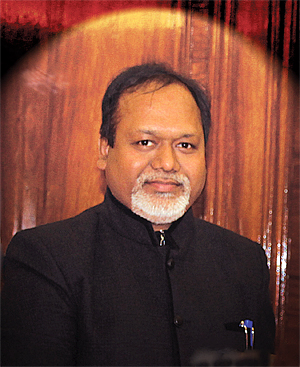INDIAN ARMED FORCES CHIEFS ON
OUR RELENTLESS AND FOCUSED PUBLISHING EFFORTS

SP Guide Publications puts forth a well compiled articulation of issues, pursuits and accomplishments of the Indian Army, over the years

I am confident that SP Guide Publications would continue to inform, inspire and influence.

My compliments to SP Guide Publications for informative and credible reportage on contemporary aerospace issues over the past six decades.
A Word from Editor-in-Chief
With the focus of the NDA government on promoting regional aviation, India too could prove to be an attractive market for Embraer E2 jet liners

On December 11, Prime Minister Narendra Modi ushered in a new dawn for general aviation with his flight aboard a Kodiak 100 seaplane from Sabarmati river in Ahmedabad to Dharoi Dam in Mehsana district. Even though the flight was of a very short duration, it drew considerable public attention as also rekindled hope for general aviation as also for the newly launched Regional Connectivity Scheme aimed at giving impetus to regional aviation. However, just a week earlier, the Ministry of Civil Aviation (MoCA) had taken a decision to do away with the need to obtain prior clearance from the Directorate General of Civil Aviation before every flight by a business aircraft to a destination outside the country. The business and general aviation segment of the Indian civil aviation industry is certainly looking forward to further reforms in the regulatory regime to unshackle this segment of the Indian civil aviation industry.
On the global scene, Embraer of Brazil crossed a major milestone in the first week of December 2017 when it handed over the 1,400th regional airliner to Envoy Air, a wholly owned subsidiary of American Airlines Group. Prospects for the Brazilian aerospace major appear to be bright as the assessment is that the over the next two decades, the global airline industry will need to induct as many as 3,765 of the E2 family of regional jets. With the focus of the NDA Government on promoting regional aviation, India too could prove to be an attractive market for Embraer E2 jet liners.
Writing from Dubai, Bikram Vohra analyses the dynamics of the market prospects in the nations of the Middle East for the F-35 Joint Strike Fighter (JSF), a fifth-generation combat platform from Lockheed Martin of the US. Of particular interest would be the impact of the decision by President Donald Trump to declare Jerusalem the capital of Israel. The potential customers of the F-35 JSF in the Arab world led by Saudi Arabia are clearly opposed to the decision by President Donald Trump and this could have implications for the market prospects for the F-35 in the Middle East.
The question whether business aviation is mere luxury for the affluent or it has any relevance to the economic growth of the nation, has often been a subject of debate. In this issue of SP’s Aviation, Group Captain A.K. Sachdev (Retd) has an analysis of the subject. The author is of the view that business aviation has immense potential not only to grow as an industry, but has the potential to contribute significantly to the growth of the national economy.
This issue of SP’s Aviation carries an article by Air Marshal Sukhchain Singh (Retd) on the technologies driving the growth in unmanned aerial vehicles (UAVs) for military use. Unmanned aerial platforms are definitely gaining ground over manned aircraft and their employment is set to increase manifold in the future. Practically all major nations are moving in this direction. The author however observes that India’s present holdings of UAVs are extremely low and there is a need for their induction in large numbers to meet the requirements for the future.
In his second article in this issue, Air Marshal Sukhchain Singh delves on airworthiness and certification practices in both civil and military aviation domains in India. The author is of the view that given the fact that self-sufficiency in its air assets is the aim, it is important that there be civil and military collaboration in respect of airworthiness and certification procedures for the optimum utilisation of air assets and financial prudence.
All these and more in this issue of SP’s Aviation. Also, we at SP’s wish the entire aviation community “Happy New Year” and look forward to interacting with you again next year.
Welcome aboard and happy landings!
Jai Hind!





